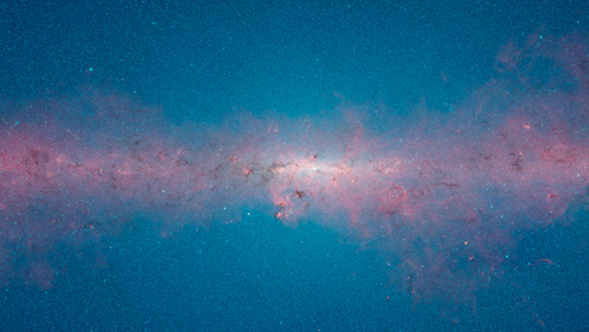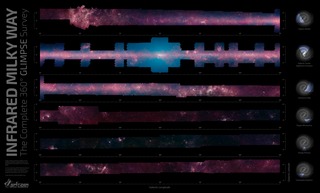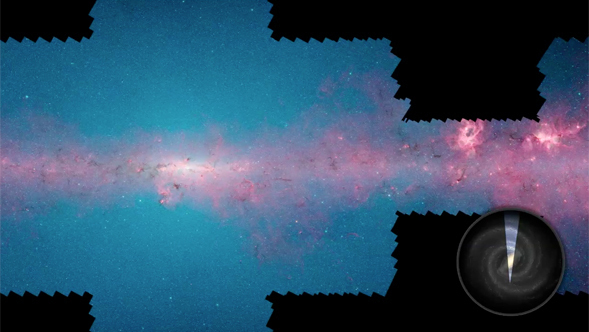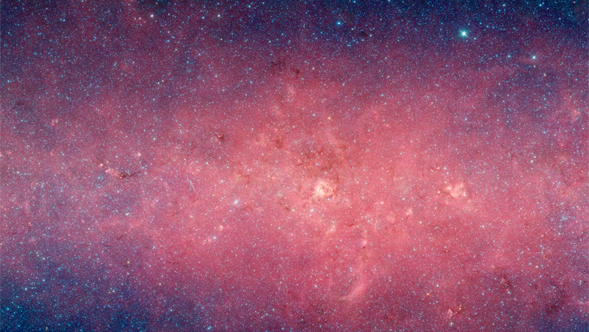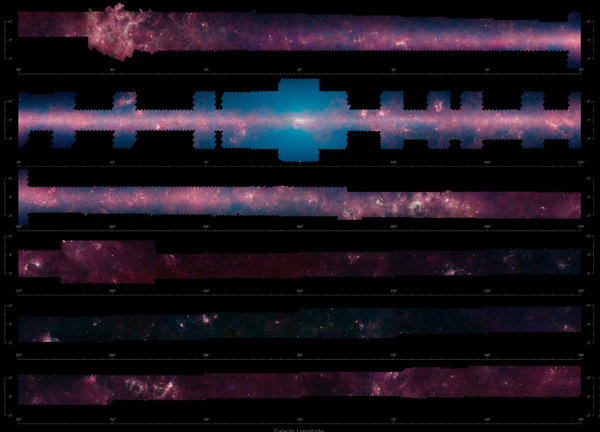Panning Through the Milky Way
Science Animations Video • March 20th, 2014 • ssc2014-02v1
This video shows a continually looping view of the Spitzer Space Telescope's new infrared view of our Milky Way Galaxy. The 360-degree mosaic comes primarily from the GLIMPSE360 project, which stands for Galactic Legacy Mid-Plane Survey Extraordinaire. It consists of more than 2 million snapshots taken in infrared light over ten years, beginning in 2003 when Spitzer launched.
The radar view to the bottom right of the screen shows the direction currently being displayed in the main image, centered on our position in the suburbs of the Milky Way.
This infrared image reveals much more of the galaxy than can be seen in visible-light views. Whereas visible light is blocked by dust, infrared light from stars and other objects can travel through dust to reach Spitzer's detectors. For instance, when looking up at our night skies, we see stars that are an average of 1,000 light-years away; the rest are hidden. In Spitzer's mosaic, light from stars throughout the galaxy -- which stretches 100,000 light-years across -- shines through. This picture covers only about three percent of the sky, but includes more than half of the galaxy's stars and the majority of its star formation activity.
The red color shows dusty areas of star formation. Throughout the galaxy, tendrils, bubbles and sculpted dust structures are apparent. These are the result of massive stars blasting out winds and radiation. Stellar clusters deeply embedded in gas and dust, green jets and other features related to the formation of young stars can also be seen for the first time. Looking towards the galactic center, the blue haze is made up of starlight -- the region is too far away for us to pick out individual stars, but they contribute to the glow. Dark filaments that show up in stark contrast to the bright background are areas of thick, cold dust that not even infrared light can penetrate.
The GLIMPSE360 map will guide astronomers for generations, helping them to further chart the unexplored territories of our own Milky Way.
Video Credit: NASA/JPL-Caltech
